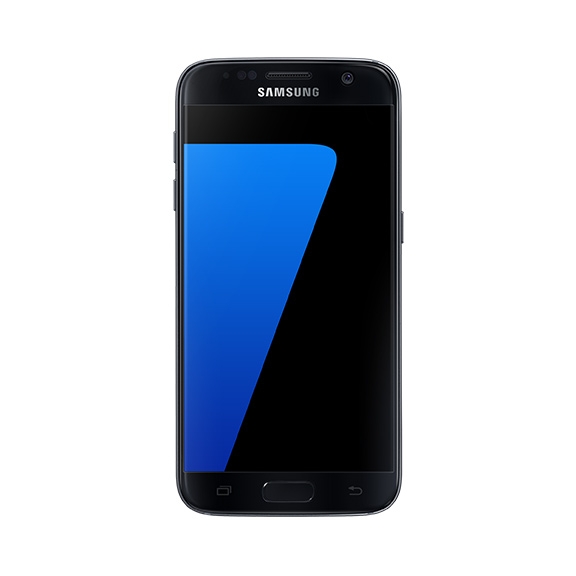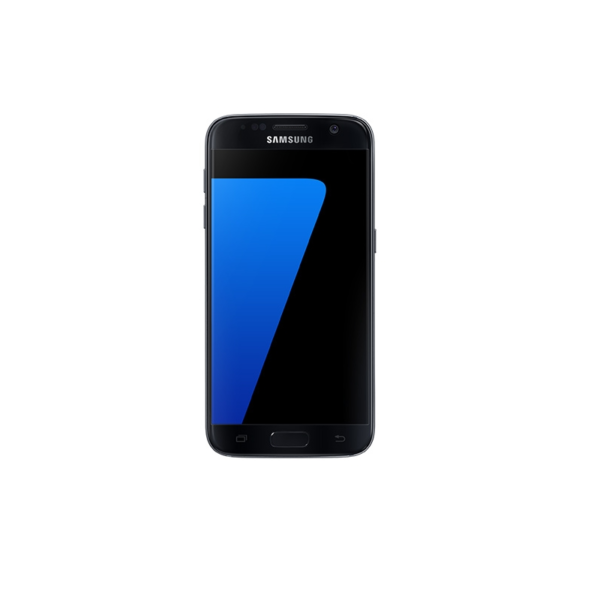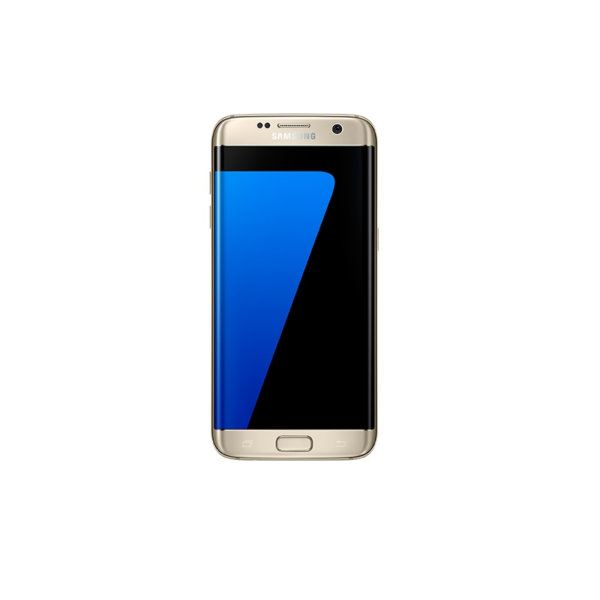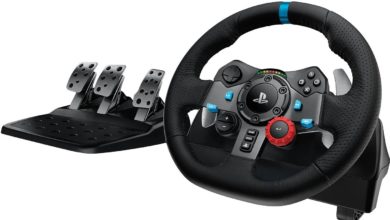
Last year, Samsung revived the dying Galaxy flagship brand with the stellar Galaxy S6 and S6 Edge phones. With metal and glass finish, the flagships looked spectacular. Samsung also toned down Touchwiz UI to improve software performance and it did wonders. Samsung once again took the lead in global smartphone sales. Yesterday, at Mobile World Congress, Samsung has taken the wraps off of the successor to the S6, the Galaxy S7. As expected, it is an evolution over S6 and the changes are well thought out and well needed. Samsung Galaxy S7 is a result of Samsung listening to users and fans. Samsung Galaxy S7 and Galaxy S7 edge will be available starting mid-March 2016 in black, gold, silver and white color options. Both the phones come with Android 6.0 Marshmallow pre loaded.
Galaxy S7 and S7 Edge now come with a new type of camera, named Dual Pixel camera. Thanks to brighter lens with wider aperture and larger pixel, low light performance will be vastly improved and camera has a much faster shutter speed and more accurate autofocus in low light conditions.
“We believe in a world that is brighter, sharper, more convenient, and more fun. We strive to deliver on that vision with the Galaxy S7 and Galaxy S7 edge by marrying elegant design with functionality and providing a seamless mobile experience,” said DJ Koh, President of Mobile Communications Business, Samsung Electronics. “We empower consumers with technology to help them get more out of life and will continue to push the frontier of what’s possible.”
Specifications
Samsung Galaxy S7


-
CPU:
-
RAM:
-
Storage:
-
Display:
-
Camera:
-
OS:
Samsung Electronics Co. Ltd today announced the newest additions to the Galaxy family of products, Samsung Galaxy S7 and Galaxy S7 edge. Created for today’s consumer lifestyle, Galaxy S7 and Galaxy S7 edge lead the industry with a refined design, more advanced camera, streamlined software functionality and unparalleled connectivity to a galaxy of products, services, and experiences.
“We believe in a world that is brighter, sharper, more convenient, and more fun. We strive to deliver on that vision with the Galaxy S7 and Galaxy S7 edge by marrying elegant design with functionality and providing a seamless mobile experience,” said DJ Koh, President of Mobile Communications Business, Samsung Electronics. “We empower consumers with technology to help them get more out of life and will continue to push the frontier of what’s possible.”
Advanced Camera: High Quality Images No Matter the Time of Day or Location
Galaxy S7 and Galaxy S7 edge introduce the first Dual Pixel camera on a smartphone, delivering brighter and sharper images, even in low light. Thanks to the revolutionary Dual Pixel technology, brighter lens with wider aperture, and bigger pixel, the camera has a faster shutter speed and a more accurate autofocus even in low-light conditions. Motion Panorama, a new camera mode, brings movement to traditional panoramic photos, giving the user a completely immersive visual experience.
Refined Design and Function
The 5.1-inch Galaxy S7 and 5.5-inch Galaxy S7 edge are constructed with 3D glass and metal – all in a sleek design with durability and ergonomic curves for a comfortable grip. From work to play, the device’s new Always-On Display, gives users a simplified, zero touch experience where they don’t need to worry about missing a call or important notification.
Without compromising design, Galaxy S7 and Galaxy S7 edge both have increased utility with IP68 water and dust resistance. Edge UX, the advanced edge experience available on Galaxy S7 edge, provides convenience and increased efficiency by creating easy shortcuts to users’ most loved functions such as email, selfie mode, panorama mode or third party applications.
Enhanced Performance: From Charging to Gaming
Galaxy S7 and Galaxy S7 edge deliver fast wired and wireless charging technology. Additionally, the hybrid SIM card tray allows users to insert a microSD card for up to 200GB of additional storage and in some select countries, the tray can be used with a dual SIM card.
Samsung also made significant hardware and software updates to optimize gaming performance on Galaxy S7 and Galaxy S7 edge. The powerful processer and bigger battery capacity ensure longer playing time, and the internal cooling system keeps the device from overheating. Game Launcher, a new add-on for gamers, allows users to manage battery consumption and minimize notifications. Additionally, users can record their gaming experience or share their screen to play with others. Paired with Galaxy S7 and Galaxy S7 edge, Vulkan API gives users the ability to play high-performance graphic games with lower battery consumption.
The Galaxy Experience
Samsung continues to push the boundaries of hardware, software and services to create devices that are designed to improve how consumers connect, share, organize and get more out of life. The company is redefining what is possible, beyond the limits of today’s technology, by introducing a constellation of seamless mobile experiences.
Whether it’s the seamless connection between Galaxy S7 and Galaxy S7 edge and the new Gear S2 Classic to monitor fitness, or connecting with Gear VR to “travel” the world – Samsung redefines what’s possible for the mobile experience and beyond.
Beyond the phone, Galaxy S7 and Galaxy S7 edge users can also get the best mobile payment service with Samsung Pay; it’s secure, easy-to-use and accepted almost anywhere. Protected by Samsung KNOX, fingerprint scanning and advanced tokenization, Samsung Pay works with NFC (Near Field Communication), MST (Magnetic Secure Transmission) and Barcode technology, making mobile payments available to more merchants and consumers than ever before.
Galaxy S7 and Galaxy S7 edge will be available starting mid-March 2016.
Specs
General
| Price | Rs. 48,900/- |
| Announced | 21 February, 2016 |
| Released | 17 March, 2016 |
| Status | Available |
Display
| Display Type <strong>Display Technology => </strong> A number of display technologies and types used in mobile phones => TFT (Thin Film Transistor), IPS (In-Place Switching), OLED (Organic Light Emitting Diode), AMOLED (Active-Matrix Organic Light-Emitting Diode), Super AMOLED (an even advanced version of AMOLED), Resistive Touchscreen (Resistive touchscreens contain two layer of conductive material with a very small gap between them which acts as a resistance), Capacitive Touchsceen (Capacitive touchscreen technology consists of a layer of glass coated with a transparent conductor) | Dual EDGE Super AMOLED |
| Size | 5.1 |
| Resolution | 1440 x 2560 |
| Pixel Density <strong>Pixel Density (PPI)</strong> is refers to the concentration of pixels on a particular display, measured in pixels per inch (ppi). Pixel density is calculated by dividing the diagonal pixel resolution of a display by its diagonal size, higher pixel density better display quality. | 577 ppi |
| Features | Always On display |
| Secondary Display | None |
Hardware
| Chipset <strong>Chipset</strong> is a group of integrated circuits designed to perform one or a more dedicated functions, often with real time computing constraints, Popular smartphones are equipped with more advanced embedded chipsets that can do many different tasks depending on their programming. | Exynos or Snapdragon 820 |
| CPU <strong>CPU</strong> (Central Processing Unit) mostly known as processors, CPU processes instructions in order to carry out certain functions that make your device operate properly. Processors are often described as the brain of computers, smartphones and tablets, Smartphones and tablets rely on processors to carry out their every task, Processors are an incredibly important factor in selecting any type of computing device, including your smartphone. | Quad-core 1.5 GHz Cortex-A53 & Quad-core 2.1 GHz Cortex-A57 |
| GPU <strong>GPU</strong> (Graphics Processing Unit) is a single-chip processor designed to rapidly manipulate and alter memory to accelerate the creation of images in a frame buffer intended for output to a display, This includes things such as lighting effects, object transformations, and 3D motion. | Mali GPU or Adreno 530 |
| RAM (Memory) <strong>RAM</strong> (Random Access Memory) is a type of computer memory that can be accessed randomly, any byte of memory can be accessed without touching the preceding bytes that allows information to be stored and accessed quickly from random locations. RAM is the most common type of memory found in computer systems, smartphones, tablets and other electronic devices. | 4GB |
| Internal Storage <strong>Internal Storage</strong> is a data storage space (flash memory) mostly used in smartphones, tablets and other electronic devices where operating system, apps, music, photos, videos, files and other user data Is stored. | 32/64 |
| Card Slot <strong>Memory Card Slot</strong> is a special slot for inserting a memory card. Memory cards allow you to expand the phone's built-in memory, A memory card (sometimes called a flash memory card or a storage card) is a small storage medium used to store data such as text, pictures, audio, and video, for use on small, portable or remote computing devices such as mobile phones, mp3 players, digital cameras. | Yes, Up to 200GB |
| Sensors <strong>Sensors</strong> are electronic components that detects and responds to some type of input from the physical environment. The specific input could be light, heat, motion, moisture, pressure and location, The output is generally a signal that is converted to use in computing systems, a location sensor, such as a GPS receiver is able to detect current location of your electronic device. | Accelerometer, Barometer, Fingerprint Sensor, Gyro Sensor, Geomagnetic Sensor, Hall Sensor, HR Sensor, RGB Light Sensor, Proximity Sensor |
Battery
| Battery Type <strong>Battery Type => </strong> Cell phones run on various kinds of batteries depending on the manufacturer, phone size or shape and features. There are basically four types of cell phone batteries => Lithium Polymer, Lithium Ion, Nickel Metal Hydride and Nickel Cadmium. | Li-Ion (Lithium Ion) |
| Capacity <strong>Battery Capacity</strong> is a measure (typically in Amp-hr) of the charge stored by the battery, and is determined by the mass of active material contained in the battery. The battery capacity represents the maximum amount of energy that can be extracted from the battery under certain conditions. | 3000mAh |
Camera
| Primary <strong>Camera</strong> is able to capture photographs and usually videos, The most important characteristics of a camera are the resolution (measured in megapixels), lens focus type (fixed or automatic), higher megapixel cameras are known to capture higher quality photos, but not always a good measurement of the photos quality. | 12mp |
| Camera Features |
16MP / F1.7 Smart OIS / VDIS Auto real-time HDR 5MP / F1.7 / VDIS Auto real-time HDR |
| Secondary | 5mp |
| Video | Up to 4K resolution |
| Flash <strong>Flash Light => </strong> There is commonly two types of flash lights are used in camera mobile phones, LED Flash (LED flash offers lower power consumption with drive circuitry that takes up very little room, LEDs can be strobed faster than any other light source), Xenon Flash (xenon flash produces an extremely intense full-spectrum white light for a very short duration) | Yes |
Design
| Type <strong>Design Type</strong> called form factor refers to a mobile phone's size, shape, and style as well as the layout and position of major components of phone. There are three major form factors seen in mobile phones => bar phones, folding phones and sliding phones. | Bar |
| Dimensions | 142.4 x 69.6 x 7.9mm |
| Weight | 152 grams |
| Protection |
Metal and Glass body IP68 certified dust and water resistance |
| Colors | Black Sapphire, Gold Platinum, Silver Titan, White Pearl |
Network
| SIM <strong>SIM</strong> (Subscriber Identity Module) is a small card that contains mobile network subscriber's account information. This allows the phone using the card to attach to a mobile network. The SIM card is most commonly associated with GSM and UMTS mobile networks. Moving a SIM card from one phone to another allows a subscriber to switch mobile phones without having to contact their mobile network carrier. SIM cards can also be used by a phone to store limited amounts of data, such as phone numbers and text messages. | Micro SIM |
| Dual SIM | No |
| 2G Network | GSM850,GSM900,DCS1800,PCS1900 |
| 3G Network | 3G CDMA : BC0(800),BC1(1900) |
| 4G Network | B2(1900), B3(1800), B4(AWS), B7(2600), B13(700) |
Software
| Operating System <strong>OS => </strong> Every computer system run on a base software called Operating System (OS). Operating System controls all basic operations of the computer (such as smartphone, PDAs, tablet computers and other handheld devices). The Operating System allows the user to install and run third party applications (apps), apps are used to add new functionality to the device. | Android™ 6.0, Marshmallow |
| User Interface <strong>UI</strong> or user interface of a device is the look and feel of the on-screen menu system. How it works, its color scheme, how it responds to button presses, all of these things are part of the user interface. | TouchWiz |
Connectivity
| Bluetooth <strong>Bluetooth</strong> is a wireless communications technology for exchanging data between mobile phones, headsets, computers and other network devices over short distances without wires, Bluetooth technology was primarily designed to support simple wireless networking of personal consumer devices. | v4.2 |
| Infrared <strong>Infrared</strong> connectivity is an old wireless technology used to connect two electronic devices. It uses a beam of infrared light to transmit information and so requires direct line of sight and operates only at close range. | |
| Wi-fi <strong>Wi-Fi</strong> is a popular wireless networking technology using radio waves to provide high-speed network connections that allows devices to communicate without cords or cables, Wi-Fi is increasingly becoming the preferred mode of internet connectivity all over the world. | 802.11 b/g/n/ac |
| USB | USB v3.0 |
| GPS <strong>GPS</strong> The Global Positioning System is a satellite-based radio navigation system, GPS permits users to determine their position, velocity and the time 24 hours a day, in all weather, anywhere in the world, In order to locate your position, your device or GPS receiver must have a clear view of the sky. | Yes |
| NFC <strong>NFC</strong> (Near field communication) is a set of standards for smartphones and similar devices to establish peer-to-peer radio communications with each other by touching them together or bringing them into proximity, usually no more than a few inches. |
Benchmarks
Reviews
Samsung Galaxy S7 Edge


-
CPU:
-
RAM:
-
Storage:
-
Display:
-
Camera:
-
OS:
Samsung Electronics Co. Ltd today announced the newest additions to the Galaxy family of products, Samsung Galaxy S7 and Galaxy S7 edge. Created for today’s consumer lifestyle, Galaxy S7 and Galaxy S7 edge lead the industry with a refined design, more advanced camera, streamlined software functionality and unparalleled connectivity to a galaxy of products, services, and experiences.
“We believe in a world that is brighter, sharper, more convenient, and more fun. We strive to deliver on that vision with the Galaxy S7 and Galaxy S7 edge by marrying elegant design with functionality and providing a seamless mobile experience,” said DJ Koh, President of Mobile Communications Business, Samsung Electronics. “We empower consumers with technology to help them get more out of life and will continue to push the frontier of what’s possible.”
Advanced Camera: High Quality Images No Matter the Time of Day or Location
Galaxy S7 and Galaxy S7 edge introduce the first Dual Pixel camera on a smartphone, delivering brighter and sharper images, even in low light. Thanks to the revolutionary Dual Pixel technology, brighter lens with wider aperture, and bigger pixel, the camera has a faster shutter speed and a more accurate autofocus even in low-light conditions. Motion Panorama, a new camera mode, brings movement to traditional panoramic photos, giving the user a completely immersive visual experience.
Refined Design and Function
The 5.1-inch Galaxy S7 and 5.5-inch Galaxy S7 edge are constructed with 3D glass and metal – all in a sleek design with durability and ergonomic curves for a comfortable grip. From work to play, the device’s new Always-On Display, gives users a simplified, zero touch experience where they don’t need to worry about missing a call or important notification.
Without compromising design, Galaxy S7 and Galaxy S7 edge both have increased utility with IP68 water and dust resistance. Edge UX, the advanced edge experience available on Galaxy S7 edge, provides convenience and increased efficiency by creating easy shortcuts to users’ most loved functions such as email, selfie mode, panorama mode or third party applications.
Enhanced Performance: From Charging to Gaming
Galaxy S7 and Galaxy S7 edge deliver fast wired and wireless charging technology. Additionally, the hybrid SIM card tray allows users to insert a microSD card for up to 200GB of additional storage and in some select countries, the tray can be used with a dual SIM card.
Samsung also made significant hardware and software updates to optimize gaming performance on Galaxy S7 and Galaxy S7 edge. The powerful processer and bigger battery capacity ensure longer playing time, and the internal cooling system keeps the device from overheating. Game Launcher, a new add-on for gamers, allows users to manage battery consumption and minimize notifications. Additionally, users can record their gaming experience or share their screen to play with others. Paired with Galaxy S7 and Galaxy S7 edge, Vulkan API gives users the ability to play high-performance graphic games with lower battery consumption.
The Galaxy Experience
Samsung continues to push the boundaries of hardware, software and services to create devices that are designed to improve how consumers connect, share, organize and get more out of life. The company is redefining what is possible, beyond the limits of today’s technology, by introducing a constellation of seamless mobile experiences.
Whether it’s the seamless connection between Galaxy S7 and Galaxy S7 edge and the new Gear S2 Classic to monitor fitness, or connecting with Gear VR to “travel” the world – Samsung redefines what’s possible for the mobile experience and beyond.
Beyond the phone, Galaxy S7 and Galaxy S7 edge users can also get the best mobile payment service with Samsung Pay; it’s secure, easy-to-use and accepted almost anywhere. Protected by Samsung KNOX, fingerprint scanning and advanced tokenization, Samsung Pay works with NFC (Near Field Communication), MST (Magnetic Secure Transmission) and Barcode technology, making mobile payments available to more merchants and consumers than ever before.
Galaxy S7 and Galaxy S7 edge will be available starting mid-March 2016.
Specs
General
| Announced | 21 February, 2016 |
| Released | 16 March, 2016 |
| Status | Available |
Display
| Display Type <strong>Display Technology => </strong> A number of display technologies and types used in mobile phones => TFT (Thin Film Transistor), IPS (In-Place Switching), OLED (Organic Light Emitting Diode), AMOLED (Active-Matrix Organic Light-Emitting Diode), Super AMOLED (an even advanced version of AMOLED), Resistive Touchscreen (Resistive touchscreens contain two layer of conductive material with a very small gap between them which acts as a resistance), Capacitive Touchsceen (Capacitive touchscreen technology consists of a layer of glass coated with a transparent conductor) | Dual EDGE Super AMOLED |
| Size | 5.5 |
| Resolution | 1440 x 2560 |
| Pixel Density <strong>Pixel Density (PPI)</strong> is refers to the concentration of pixels on a particular display, measured in pixels per inch (ppi). Pixel density is calculated by dividing the diagonal pixel resolution of a display by its diagonal size, higher pixel density better display quality. | 534 ppi |
Hardware
| Chipset <strong>Chipset</strong> is a group of integrated circuits designed to perform one or a more dedicated functions, often with real time computing constraints, Popular smartphones are equipped with more advanced embedded chipsets that can do many different tasks depending on their programming. | Exynos Octa Core or SnapDragon 820 |
| CPU <strong>CPU</strong> (Central Processing Unit) mostly known as processors, CPU processes instructions in order to carry out certain functions that make your device operate properly. Processors are often described as the brain of computers, smartphones and tablets, Smartphones and tablets rely on processors to carry out their every task, Processors are an incredibly important factor in selecting any type of computing device, including your smartphone. | Octa Core |
| GPU <strong>GPU</strong> (Graphics Processing Unit) is a single-chip processor designed to rapidly manipulate and alter memory to accelerate the creation of images in a frame buffer intended for output to a display, This includes things such as lighting effects, object transformations, and 3D motion. | Mali GPU or Adreno 530 |
| RAM (Memory) <strong>RAM</strong> (Random Access Memory) is a type of computer memory that can be accessed randomly, any byte of memory can be accessed without touching the preceding bytes that allows information to be stored and accessed quickly from random locations. RAM is the most common type of memory found in computer systems, smartphones, tablets and other electronic devices. | 4GB |
| Internal Storage <strong>Internal Storage</strong> is a data storage space (flash memory) mostly used in smartphones, tablets and other electronic devices where operating system, apps, music, photos, videos, files and other user data Is stored. | 32/64GB |
| Card Slot <strong>Memory Card Slot</strong> is a special slot for inserting a memory card. Memory cards allow you to expand the phone's built-in memory, A memory card (sometimes called a flash memory card or a storage card) is a small storage medium used to store data such as text, pictures, audio, and video, for use on small, portable or remote computing devices such as mobile phones, mp3 players, digital cameras. | Yes |
| Sensors <strong>Sensors</strong> are electronic components that detects and responds to some type of input from the physical environment. The specific input could be light, heat, motion, moisture, pressure and location, The output is generally a signal that is converted to use in computing systems, a location sensor, such as a GPS receiver is able to detect current location of your electronic device. | Accelerometer, Barometer, Fingerprint Sensor, Gyro Sensor, Geomagnetic Sensor, Hall Sensor, HR Sensor, RGB Light Sensor, Proximity Sensor |
Battery
| Battery Type <strong>Battery Type => </strong> Cell phones run on various kinds of batteries depending on the manufacturer, phone size or shape and features. There are basically four types of cell phone batteries => Lithium Polymer, Lithium Ion, Nickel Metal Hydride and Nickel Cadmium. | Li-Ion (Lithium Ion) |
| Capacity <strong>Battery Capacity</strong> is a measure (typically in Amp-hr) of the charge stored by the battery, and is determined by the mass of active material contained in the battery. The battery capacity represents the maximum amount of energy that can be extracted from the battery under certain conditions. | 3600mAh |
| Fast Charging | Yes |
Camera
| Primary <strong>Camera</strong> is able to capture photographs and usually videos, The most important characteristics of a camera are the resolution (measured in megapixels), lens focus type (fixed or automatic), higher megapixel cameras are known to capture higher quality photos, but not always a good measurement of the photos quality. | 12mp |
| Camera Features |
Dual Pixel 12MP / F1.7 Smart OIS / VDIS Auto real-time HDR 5MP / F1.7 / VDIS 120˚ Wide Selfie Angle Auto real-time HDR |
| Secondary | 5mp |
| Flash <strong>Flash Light => </strong> There is commonly two types of flash lights are used in camera mobile phones, LED Flash (LED flash offers lower power consumption with drive circuitry that takes up very little room, LEDs can be strobed faster than any other light source), Xenon Flash (xenon flash produces an extremely intense full-spectrum white light for a very short duration) | Yes |
Design
| Type <strong>Design Type</strong> called form factor refers to a mobile phone's size, shape, and style as well as the layout and position of major components of phone. There are three major form factors seen in mobile phones => bar phones, folding phones and sliding phones. | Bar |
| Dimensions | 150.9 x 72.6 x 7.7mm |
| Weight | 157grams |
| Protection |
Metal and Glass body IP68 certified dust and water resistance |
| Colors | White Pearl, Black Sapphire, Gold Platinum, Blue Topaz |
Network
| SIM <strong>SIM</strong> (Subscriber Identity Module) is a small card that contains mobile network subscriber's account information. This allows the phone using the card to attach to a mobile network. The SIM card is most commonly associated with GSM and UMTS mobile networks. Moving a SIM card from one phone to another allows a subscriber to switch mobile phones without having to contact their mobile network carrier. SIM cards can also be used by a phone to store limited amounts of data, such as phone numbers and text messages. | Micro SIM |
| Dual SIM | No |
| 2G Network | GSM850,GSM900,DCS1800,PCS1900 |
| 3G Network | 3G CDMA : BC0(800),BC1(1900) |
| 4G Network | B2(1900), B3(1800), B4(AWS), B7(2600), B13(700) |
Software
| Operating System <strong>OS => </strong> Every computer system run on a base software called Operating System (OS). Operating System controls all basic operations of the computer (such as smartphone, PDAs, tablet computers and other handheld devices). The Operating System allows the user to install and run third party applications (apps), apps are used to add new functionality to the device. | Android™ 6.0, Marshmallow |
| User Interface <strong>UI</strong> or user interface of a device is the look and feel of the on-screen menu system. How it works, its color scheme, how it responds to button presses, all of these things are part of the user interface. | TouchWiz |
Connectivity
| Bluetooth <strong>Bluetooth</strong> is a wireless communications technology for exchanging data between mobile phones, headsets, computers and other network devices over short distances without wires, Bluetooth technology was primarily designed to support simple wireless networking of personal consumer devices. | v4.2 |
| Infrared <strong>Infrared</strong> connectivity is an old wireless technology used to connect two electronic devices. It uses a beam of infrared light to transmit information and so requires direct line of sight and operates only at close range. | |
| Wi-fi <strong>Wi-Fi</strong> is a popular wireless networking technology using radio waves to provide high-speed network connections that allows devices to communicate without cords or cables, Wi-Fi is increasingly becoming the preferred mode of internet connectivity all over the world. | 802.11 b/g/n/ac |
| USB | USB v2.0 |
| GPS <strong>GPS</strong> The Global Positioning System is a satellite-based radio navigation system, GPS permits users to determine their position, velocity and the time 24 hours a day, in all weather, anywhere in the world, In order to locate your position, your device or GPS receiver must have a clear view of the sky. | Yes |
| NFC <strong>NFC</strong> (Near field communication) is a set of standards for smartphones and similar devices to establish peer-to-peer radio communications with each other by touching them together or bringing them into proximity, usually no more than a few inches. |
Benchmarks
Reviews






